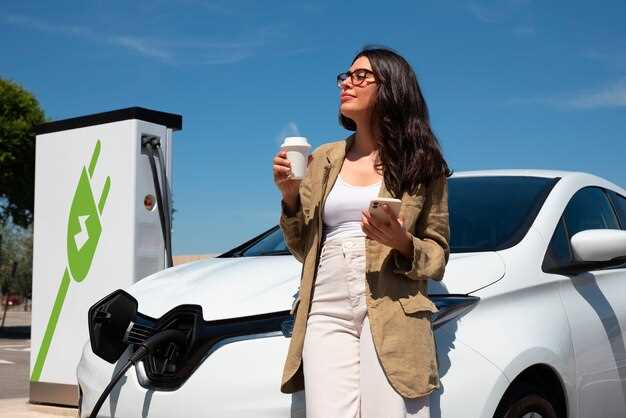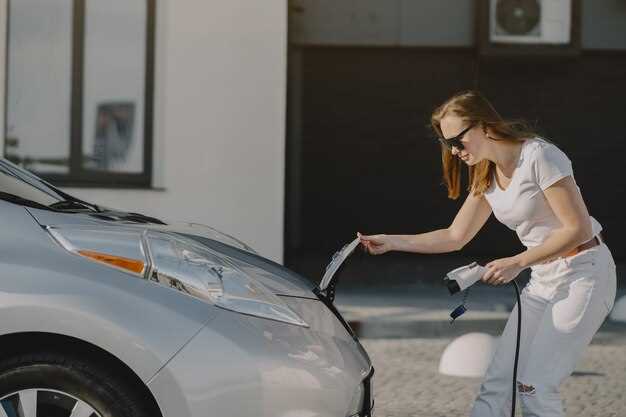
As the popularity of electric vehicles (EVs) continues to rise, Audi owners are increasingly faced with the decision of how to efficiently manage their charging needs. The choice between home charging and utilizing public charging stations can significantly impact the overall experience of owning an EV. Understanding these preferences is crucial for both current and prospective Audi drivers, as it influences not just convenience, but also cost-effectiveness and charging efficiency.
Home charging offers a level of convenience that many Audi owners appreciate. With a dedicated charging station installed at home, drivers can replenish their vehicle’s battery overnight, ensuring they start each day with a full charge. This not only provides peace of mind but also allows for greater control over the charging process, such as taking advantage of lower electricity rates during off-peak hours. Moreover, the availability of various home charging solutions tailored for different Audi models makes this option appealing to owners.
On the other hand, public charging stations play a crucial role in the broader EV ecosystem. They offer flexibility and accessibility for Audi drivers who may need to charge their vehicles while on the go or during long trips. The expansion of charging infrastructure across cities and highways has alleviated some concerns related to range anxiety. However, the availability and speed of public charging can vary significantly, leading to mixed experiences for Audi owners who rely on these stations. As such, understanding the balance between home and public charging preferences is essential for optimizing the electric vehicle ownership experience.
Audi Owners Preferences: Home Charging vs Public Charging

Audi owners often face the choice between home charging and public charging options for their electric vehicles (EVs). Each method has its own advantages and considerations, influencing the overall charging experience.
Home charging is generally favored by owners for several reasons:
- Convenience: Charging at home allows Audi owners to start each day with a full battery without making special trips to a station.
- Cost-Effectiveness: Charging at home typically costs less than using public stations, especially if owners use off-peak electricity rates.
- Control: Home charging gives owners greater control over the charging schedule, allowing them to charge overnight or during hours when electricity is cheaper.
- Dedicated Infrastructure: Owners can install higher-capacity home charging stations, ensuring faster and more efficient charging compared to some public options.
However, public charging stations also play a critical role in the EV ecosystem, particularly for Audi owners who:
- Travel Frequently: Longer trips may require using public charging stations to extend the vehicle range beyond home charging capabilities.
- Lack Charging at Home: Some owners in urban environments may not have the ability to install home chargers, making public charging essential.
- Explore New Locations: Public stations provide the flexibility to charge while visiting new areas, enhancing the overall driving experience.
Ultimately, the preference between home and public charging varies among Audi owners based on personal circumstances such as driving habits, access to infrastructure, and travel needs. As Audi continues to expand its EV lineup, understanding these preferences will be crucial in shaping future charging solutions.
Factors Influencing Audi Owners’ Choice for Home Charging
One of the primary factors influencing Audi owners’ preference for home charging is convenience. Having a charging station at home eliminates the need to visit public charging locations, allowing for easy overnight charging and ensuring the vehicle is always ready for use.
Cost-effectiveness also plays a crucial role. Home charging usually comes with lower electricity rates compared to public charging stations, resulting in significant savings over time. Moreover, many electric utility providers offer time-of-use plans that can further reduce charging costs during off-peak hours.
Another important consideration is the availability of charging infrastructure. In areas where public charging stations are scarce, the ability to charge at home becomes essential for Audi owners. This is particularly relevant for those living in urban environments where access to public charging may be limited.
Additionally, the speed of home charging stations can be a deciding factor. Many Audi owners opt for Level 2 home chargers, which provide faster charging times compared to standard outlets. This efficiency allows users to fully recharge their vehicles overnight, making home charging a more attractive option.
Lastly, the growing concern about the reliability of public charging networks influences the decision as well. Audi owners often prefer the peace of mind associated with home charging, knowing they can consistently charge their vehicles without worrying about station availability or functionality.
Benefits and Drawbacks of Using Public Charging Stations for Audi Owners

Public charging stations offer several advantages for Audi owners, especially for those who frequently travel or do not have access to home charging. One significant benefit is the convenience of charging while on the go. Public stations can be found in shopping centers, parking lots, and along highways, allowing Audi owners to charge their EVs during errands or long journeys. This can significantly reduce range anxiety, as it ensures that drivers can find power when needed.
Another advantage is the potential for faster charging. Many public charging stations provide high-speed DC fast chargers, which can recharge an EV’s battery in a fraction of the time it would take using a standard home charger. This means that Audi owners can spend less time waiting and more time driving, making it an attractive option for those with busy schedules.
However, there are notable drawbacks to relying on public charging. The availability of charging stations can vary, with high demand potentially leading to long wait times. During peak hours, drivers may struggle to find an open charger, which can be frustrating and time-consuming. Furthermore, public charging stations may not be as well-maintained as home charging setups, leading to concerns about reliability and functionality.
The cost is another aspect to consider. Some public charging stations may have higher fees compared to the cost of charging at home, particularly when using fast chargers. This can add to the overall expense of owning an EV. Additionally, there may be variations in payment methods and pricing structures, which could complicate the charging experience.
In conclusion, while public charging stations provide essential benefits such as convenience and faster charging for Audi owners, they also come with drawbacks, including availability issues, potential costs, and reliability concerns. Balancing the use of public and home charging options can help maximize the benefits and minimize the downsides for EV drivers.
Installation Considerations for Home Charging Units for Audis
When considering the installation of home charging stations for Audis, several factors come into play to ensure efficient and safe charging. First and foremost, power availability must be assessed. Most home charging units require a dedicated circuit to provide adequate power, typically ranging from 240 volts for Level 2 chargers, which are ideal for electric vehicles.
Next, location is crucial. The charging station should be installed in a convenient area, preferably close to the parking spot of the Audi. This minimizes the length of the charging cable needed, reducing potential wear and tear. Adequate space around the charging unit should also be considered to allow for easy access and connection.
Permits and regulations should not be overlooked. Depending on local building codes, you may need to acquire permits for electrical installations. It is advisable to consult with a licensed electrician familiar with EV charging installations to ensure compliance and safety.
Another important consideration is the cable length. Choose a charging station that offers a cable long enough to reach your vehicle without difficulty, accommodating any future vehicle positioning. Additionally, consider vehicles with larger battery capacities, which may require more time to charge, making higher power levels beneficial.
Finally, future scalability of the charging system should be contemplated. As technology advances, you might want to upgrade to more powerful chargers or accommodate additional electric vehicles. Installing a system that allows for easy upgrades will prepare you for the future.
